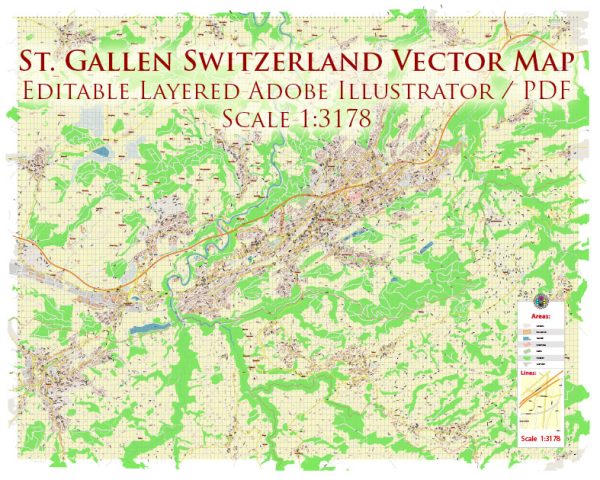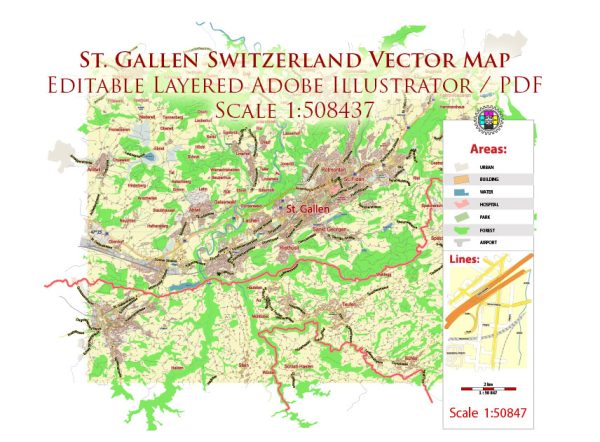St. Gallen, located in northeastern Switzerland, has a rich history of urban development that dates back to the 7th century. The city’s name is derived from Saint Gall, an Irish monk who founded the Abbey of St. Gall in the 7th century. Here’s a brief overview of the history of urban development in St. Gallen:
- Medieval Origins (7th-15th centuries): The city’s history is closely tied to the establishment of the Abbey of St. Gall in 612 AD by Saint Gall. Over the centuries, the abbey became a major cultural and economic center. The city that grew around the abbey became an important trade hub and played a crucial role in the development of the region.
- Abbey and Cathedral: The Abbey of St. Gall, a UNESCO World Heritage Site, was a center of learning and culture during the Middle Ages. The Abbey Library, with its extensive collection of medieval manuscripts, is one of the city’s most important cultural treasures. The Cathedral of St. Gall, with its distinctive twin towers, also stands as a testament to the city’s religious and architectural history.
- Market and Trade (16th-18th centuries): St. Gallen continued to prosper during the Renaissance and Baroque periods. The city became known for its textile industry, particularly the production of high-quality embroidery. The market square, surrounded by well-preserved medieval buildings, was a focal point for trade and commerce.
- Industrialization (19th century): The 19th century brought significant changes to St. Gallen with the onset of industrialization. The textile industry expanded, and the city became an important center for the production of textiles and embroidery. This period saw the development of new urban infrastructure, including factories and worker housing.
- Modern Era (20th century-present): St. Gallen continued to grow and modernize in the 20th century. The city experienced urban expansion, and new infrastructure developments, such as roads and public buildings, reflected the changing needs of a more industrialized and urbanized society.
- Cultural Heritage: St. Gallen’s rich history is visible in its well-preserved medieval architecture, including the Abbey of St. Gall, the Cathedral, and the historic Old Town. The city’s commitment to preserving its cultural heritage is evident in its UNESCO recognition and efforts to maintain and showcase its historical sites.
Today, St. Gallen is a vibrant city that blends its historical charm with modern amenities. Its historical landmarks, cultural institutions, and economic activities continue to shape its identity and contribute to its significance in the region.



 Author: Kirill Shrayber, Ph.D.
Author: Kirill Shrayber, Ph.D.